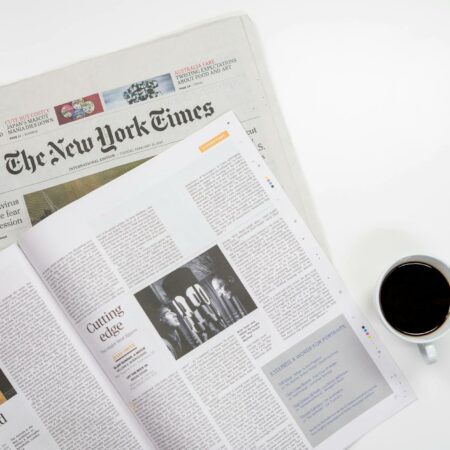The beauty of anything digital marketing related is you’re able to test and analyze just about anything in realtime to make sure it’s inline with your business goals and objectives. Conversion rates have never been more important, and along with tools such as heat maps, A/B testing your website’s elements can help you determine what resonates the most with your audience. However, if you’re new to A/B testing, it can be overwhelming to figure out what’s worth testing.
If you’re not familiar with A/B testing, it is the process of split testing two or more versions of the same element and measuring which one is more effective. The effectiveness can be multiple different things, ranging from clicks to duration on page. If you’ve ever done A/B testing on your emails for your subject lines, this is the same method but applied to websites.
Explore what things on your website are worth testing to maximize conversion rates and your site’s overall success.
Typography
It might be crazy to think, but typography plays a major role in your site’s conversion rates. While it doesn’t make sense to test every Google font under the sun, there are a few text details to A/B test with your audience:
- Sans Serif vs. Serif: It’s true that the flourishes added to typefaces (serif font like Times New Roman) or removed from them (sans serif like Helvetica) have an impact on how successful your site’s content is. While the types of fonts used on sites are based on a business’s brand, many sites use a mix of both san serif and serif typefaces. Test out which one is more effective for your headlines, body content, and so forth.
- Color: To stay in line with what our eyes are used to, keep your long-form content and most of the test of your site dark with a white or light-colored background. However, you can still test which color of text resonates better with your visitors (for example, black vs. navy text).
- Size: Testing different font sizes can help you measure user engagement and clicks. No matter what size of text you use on your website, it needs to be legible on all devices.
Content
In the digital world, content is king for many reasons, so it’s something worth testing. Some things to test with your website copy include:
- Length: There are cases when long-form content is more effective than short-form, and vice-versa, and every business will have different results from testing the content length. A great place to start testing content is on your landing pages, as these are the pages dedicated to pushing visitors down the buyer’s journey.
- Words vs. Other Forms of Content: Today, content doesn’t always mean words; it ranges from video content to podcasts. Different audiences prefer different forms of content over others, and it might be worth testing which type your audience responses better with.
- Tone: Knowing which tone your audience clicks with is something you should know when determining your target audience, but if your site isn’t seeing strong metrics this could be a factor as to why they’re not responding as they should.
Calls-to-Action
Your calls-to-action (CTAs) are the “goal drivers” of your site, meaning that their purpose is to push the visitors toward taking the next step with your business. Because of its importance, A/B testing is crucial for these elements. Here are the areas of interest you should test with your calls-to-action:
- Color: Color theory plays a significant role when choosing the right colors for your CTAs, so make sure to verse yourself in it when deciding their color. Pick a color that stands out against the rest of your elements and test at least two to see which one is more successful.
- Position: Sometimes, it might make sense to place your main CTA above the fold, so it encourages visitors to take action right away, and other times it should be placed below it. Test the position of your calls-to-action and consider placement above or below the fold, as well as the left/middle/right side of the page. It could make a huge difference in your conversion rates!
- Content: Text is probably one of the most tested features of a CTA, and for a good reason. The difference in results between “Learn More” and “Buy Now” could be broad, so try out multiple verbs, word count, and more to make sure it’s perfect for your audience.
Images and Backgrounds
Does your audience respond better to images with people in it? Do you need to look into having a simple background versus a busy one? Have the photos on your website been there since it launched? The images you use on your site can make an impact on that page’s success, and you need to see if your visitors prefer to look at images of people, products, illustrations, and everything in between.
Also, it’s worth noting that many people respond more positively to images that don’t look so stocky. If you can add original, high-quality photos to your web pages, you could see results in your favor (or maybe not; that’s what A/B testing is for).
No matter what you decided to A/B test, remember this: only test one element at a time on a web page. If you were to change five different parts on a page, you wouldn’t fully know which of those elements produced the results you’re seeing. A/B testing can be a tedious process, and you may not see drastic results from it, but in today’s competitive digital world, any advantage you can get is well worth it.
To learn more about A/B testing, get in touch with the GreenMellen team today!





